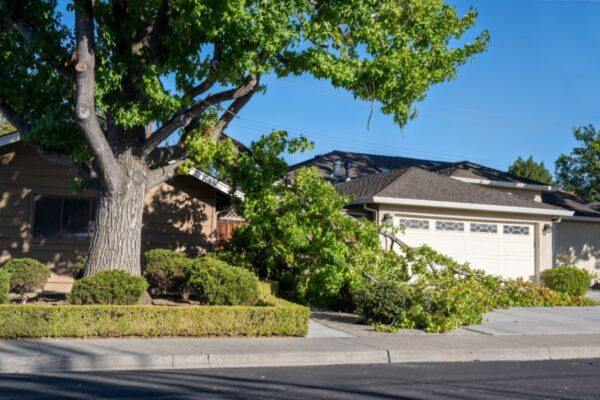When we think about protecting our homes, the first things that come to mind are usually alarms, locks, and maybe even a security system. However, one of the most significant threats to your property could be growing silently right in your backyard: your trees.
Trees provide beauty, shade, and even a sense of peace to our surroundings, but if not properly maintained, they can also pose serious risks. As a homeowner, it’s crucial to understand the importance of regular tree health checks and ensuring trees are kept at a safe distance from your home and other structures.
Why Tree Health Matters
A tree may look sturdy and strong from the outside, but that doesn’t always mean it’s in good health. Trees can be affected by disease, rot, pests, or structural issues that aren’t immediately visible. A weakened or dying tree is much more likely to lose branches or even topple over during a storm, causing significant damage to your home, vehicles, or other property.
Regularly inspecting the health of your trees can prevent these disasters. Here are a few signs that your tree might be in trouble:
- Dead or Dying Branches: Branches that are brittle, lacking leaves, or have dead patches are a sign that the tree might be unhealthy.
- Fungal Growth: Mushrooms or other fungi growing on or around the tree’s base can indicate rot or decay.
- Leaning: A tree that suddenly starts leaning could have root damage or a weakened structure.
- Cracks or Cavities: Large cracks in the trunk or cavities in the branches are red flags for potential breakage.
The Dangers of Proximity
Even healthy trees can be hazardous if they’re too close to your home. Overhanging branches can drop leaves and debris into gutters, leading to blockages and water damage. More significantly, during storms or high winds, these branches can break off and cause significant structural damage to your roof, windows, or siding.
Roots are another concern. While they’re typically out of sight, they should not be out of mind. Roots can extend far beyond the visible canopy of the tree, and when they grow close to your foundation, they can cause cracks, disrupt underground utilities, or even create trip hazards in walkways.
Best Practices for Tree Maintenance
To mitigate these risks, it’s essential to take a proactive approach to tree care:
- Regular Inspections: Have your trees inspected at least once a year, especially before storm season.
- Pruning: Regular pruning of overhanging branches can prevent them from becoming a hazard.
- Safe Distances: Ensure that large trees are planted a safe distance away from your home. Smaller trees may be closer, but should still maintain a safe distance.
- Root Barriers: If planting new trees, consider installing root barriers to prevent them from growing toward your foundation.
The Insurance Perspective
Many homeowners aren’t aware that damage caused by falling trees or branches is often covered by insurance. However, if an insurance company determines that the damage was due to negligence (such as failing to remove a known dead tree), your claim could be denied. This makes regular tree maintenance not just a good practice but a necessity for protecting your financial investment in your home.
Protecting Your Peace of Mind
Trees are a valuable part of our environment and our homes, but they require care and attention to ensure they remain an asset rather than a liability. By staying vigilant about tree health and keeping them at a safe distance from your property, you can enjoy the beauty and benefits of your trees without risking costly damage to your home.
Remember, a little maintenance today can save you from a lot of heartache—and expense—tomorrow.
Material posted on this website is for informational purposes only and does not constitute a legal opinion or medical advice. Contact your legal representative or medical professional for information specific to your legal or medical needs.



